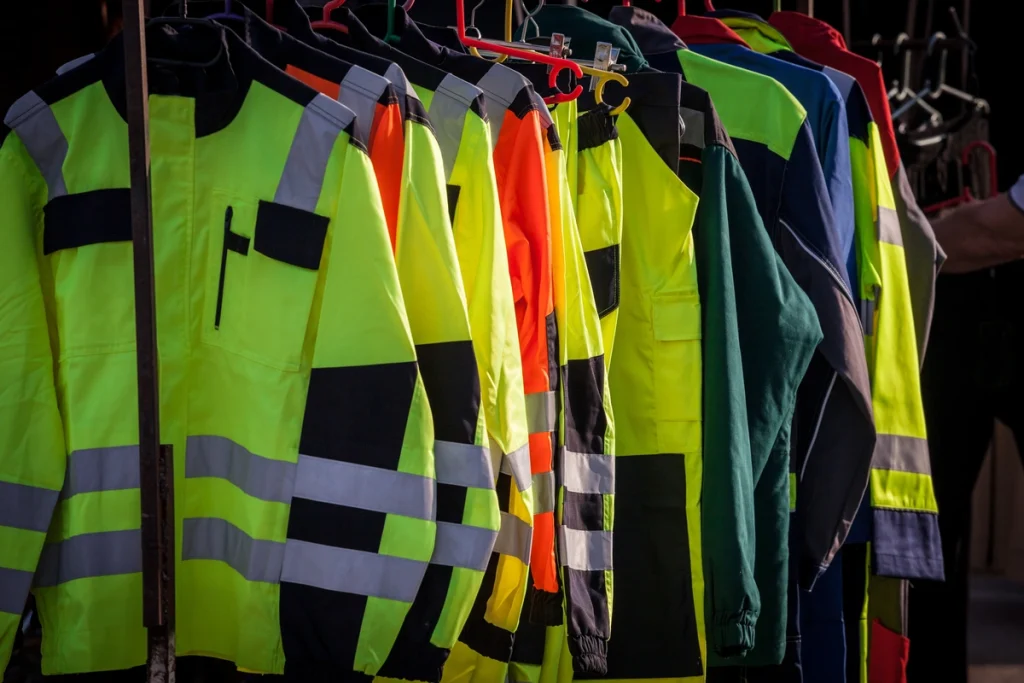Aramid clothing is a topic that is gaining attention not only among professionals in the military sector, but also among people who need advanced protection in everyday life. Aramid, a material known for its exceptional strength and resistance to high temperatures, has become a base for the development of next-generation protective clothing. In this article, we will take a closer look at what aramid is, what its key properties are, and why clothing made from this material can be a key piece of equipment for anyone who values safety and comfort in harsh conditions.
What is aramid and why is it so important?
Aramid is a synthetic polymer with high mechanical strength, abrasion, tensile and high temperature resistance. Its chemical structure is characterized by aromatic rings linked by amide bonds. Thanks to these unique characteristics, aramid is used where extraordinary strength and durability are required, making it a key component in the manufacture of protective clothing, including bulletproof vests, gloves, suits for firefighters, and even in structural components of modern aircraft.
The importance of aramid in ensuring safety and protecting human life is fundamental. Clothing made from aramid provides protection not only against bullets or shrapnel, but also against extremes of temperature and fire. For emergency services, the military, the police, as well as civilians working in dangerous conditions, aramid clothing provides a protective barrier that can determine the safety of their lives and health. Therefore, investments are constantly being made in research on aramid and its applications, aimed not only at improving its properties, but also at increasing the comfort and functionality of protective clothing.
Aramid clothing and personal safety
Aramid is changing the approach to personal safety, offering protection at a level that was previously difficult to achieve. The material is used in the production of protective clothing that effectively protects against hazards such as cuts, punctures and extreme temperatures. Thanks to its exceptional durability and resistance to damage, aramid clothing is valued in many professions requiring special protection.
Clothing made of aramid provides users with comfort and freedom of movement, which is just as important as the level of protection. The material’s lightness and flexibility allow for mobility, which is crucial for both professionals and individuals seeking effective protection in everyday life. Aramid demonstrates that advanced personal protection can go hand in hand with convenience of use, increasing its appeal to a wider audience.
Key properties and applications of aramid
Aramid, being a synthetic fiber, offers a number of properties useful in the production of protective and specialized clothing. It is characterized by good tensile strength, abrasion and cut resistance, as well as stability at high temperatures.
In the military context, aramid is often used in the production of bulletproof vests, helmets and other protective clothing, where its resistance to punctures and cuts can determine the safety of life and health. In the civilian sector, aramid clothing serves as protection for motorcyclists, heavy industry workers or emergency services, keeping them safe in potentially dangerous situations. In addition, thanks to its resistance to high temperatures, aramid is used in the manufacture of firefighting equipment.

Comparison of aramid with other protective materials
Aramid is one of many materials used in the manufacture of protective clothing, each with its own specific properties that determine its use. Aramid is distinguished by its tensile strength and heat resistance, which makes it often used in clothing for emergency services and bulletproof vests. It is prized for its ability to protect against cuts and punctures while offering comfortable wear.
Other popular protective materials include fiberglass and polymers, which are also used in the manufacture of protective gear. Fiberglass offers good mechanical resistance, but can be heavier and less flexible than aramid, which affects comfort. Polymers, such as polyethylene, are characterized by their light weight and can be used in lightweight bulletproof vests, although their resistance to high temperatures is usually lower than that of aramid.
The choice of the right material depends on protection, weight and comfort requirements. Aramid is often preferred for its versatility and balanced compromise between strength and flexibility. Ultimately, the decision on the choice of material should depend on the specific needs of the user and the conditions in which the equipment is to be used.
Maintenance and care of aramid clothing
Proper maintenance and care of aramid garments are key to maintaining their high performance and longevity. Aramid, despite its durability and resistance to damage, requires proper care to maintain its protective qualities for the long term. Care tips often include avoiding high temperatures during laundering, limiting the use of strong chemicals and drying in conditions that allow free airflow. It is important to follow the manufacturer’s recommendations for washing and maintenance, as improper care can weaken the fabric’s structure and reduce its protective properties.
In addition to regular washing and cleaning, it is also important to inspect aramid garments for any damage or wear. If any tears, abrasions or other structural damage is detected, consider repairing or replacing the garment to ensure its original protection. With proper care and regular inspection, aramid garments can serve users for a long time, providing optimal safety in a variety of situations.
The key to 21st century security
Aramid, thanks to its unique properties, has become the key to a new era of safety, adapted to the requirements of the 21st century. As a material that combines unparalleled strength with lightness and resistance to extreme conditions, it is making a significant contribution to protecting life and health in many sectors.



